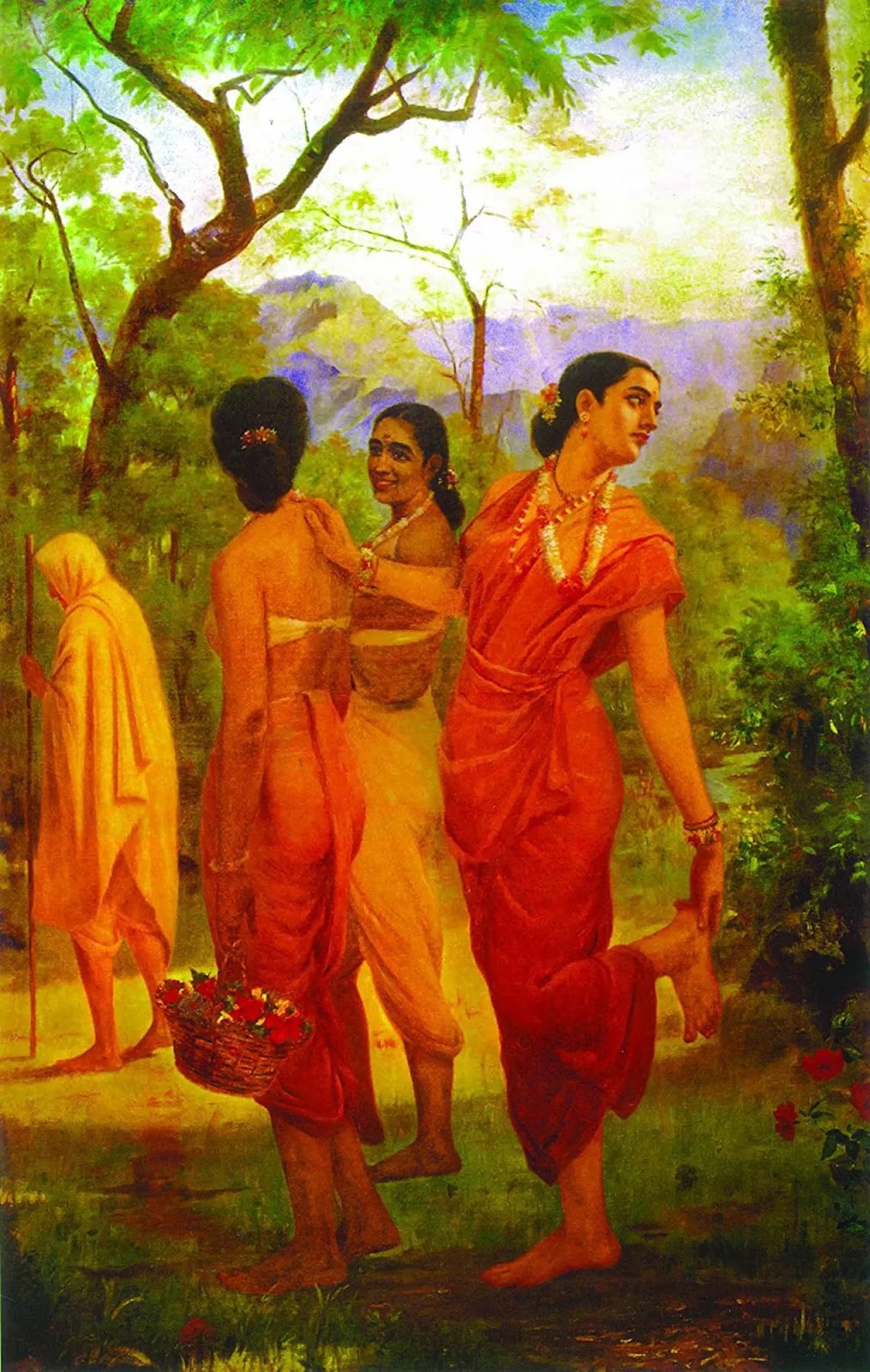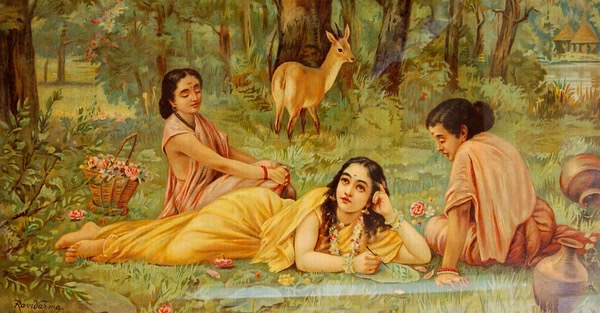The story of Shakuntala as seen through the eyes of the great painter Raja Ravi Varma
Raja Ravi Varma is one of the greatest Indian painters. He has many firsts to his credit, a member of the Royal family of Travancore in modern day Kerala (the current royals are his direct descendants), the first to extensively use oil paintings , the first to make his paintings accessible to the common man by setting up the first lithograph press in India. His greatness transcends these firsts. He was the first to give form to and introduce to the world, the traditional Indian concept of feminine beauty, of proud and confident women draped in the most elegant, form fitting Indian sari and jewelry. He brought to life in his paintings, the great nayika and nayaka, the heroines and heroes in the Indian tradition, epics and literature, in a very human, relatable form. His rendering of the subject and the access through his lithographs meant that since the late nineteenth century, Indians have seen the heroines, and the heroes of their epics, their gods, goddesses, and demons through his eyes.
I will bring to you one such subject , my personal favorite , Shakuntala, as Raja Ravi Varma saw her. Since we are students of conversational Sanskrit, I will include some Sanskrit couplets with translation where they advance the narrative.
The birth of Shakuntala
Vishwamitra the rajarshi was undertaking intense penance to achieve the exalted status of Brahmarishi. Fearful of what powers he may gain Indra sent Menaka the apsara to distract him. Vishwamitra succumbs to the charms of of Menaka and they spend a long time in bliss together. A female child is born to them. Vishwamitra realizes that he has been tricked by Indra and diverted from his tapasya. He rejects Menaka and her infant daughter. Menaka ascends to the heavens after abandoning her daughter in the forest. There peacocks lovingly protect the baby from the bests in the forest. rishi KAnva कण्व finds the baby. He adopts her and lovingly names her Shakuntala शकुन्तला ; she who शकुन्तैः ( by the peacocks) लाल्यते (is lovingly protected). He brings her up as his own daughter.
Shakuntala and Dushyanta
TaPAti Guha-ThAkuRta an art historian, wrote;








Comments
Post a Comment